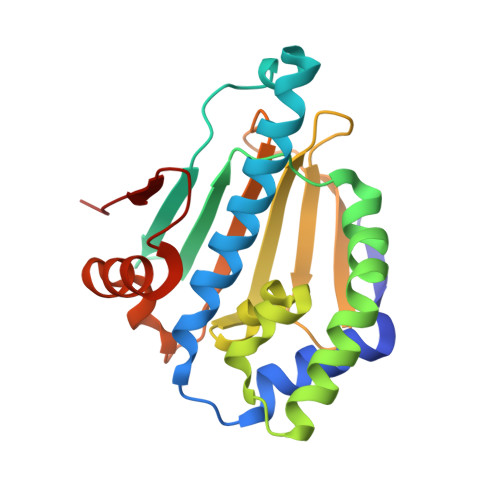Dipyridamole interacts with the N-terminal domain of HSP90 and antagonizes the function of the chaperone in multiple cancer cell lines.
Gao, J., Zhou, C., Zhong, Y., Shi, L., Luo, X., Su, H., Li, M., Xu, Y., Zhang, N., Zhou, H.(2022) Biochem Pharmacol 207: 115376-115376
- PubMed: 36513142
- DOI: https://doi.org/10.1016/j.bcp.2022.115376
- Primary Citation of Related Structures:
7DMC - PubMed Abstract:
Molecular chaperone HSP90 has been considered as a promising target for anti-cancer drug development for years. However, due to the heat shock response induced by the ATP competitive inhibitors against HSP90, the therapeutic efficacies of the compounds are compromised, which consequently restricts the clinical use of HSP90-targeted inhibitors. Therefore, there is a need to discover novel HSP90-targeted modulators which exhibit acceptable inhibition activity against the chaperone and do not induce significant heat shock response in the meantime. Here in this study, we firstly developed a tip-based affinity selection-mass spectrometry platform with optimized experimental conditions/parameters for HSP90-targeted active compound screening, and then applied it to fish out inhibitors against HSP90 from a collection of 2,395 compounds composed of FDA-approved drugs and drug candidates. Dipyridamole, which acts as an anti-thrombotic agent by modulating multiple targets and has a long history of safe use, was identified to interact with HSP90's N-terminal domain. The following conducted biophysical and biochemical experiments demonstrated that Dipyridamole could bind to HSP90's ATP binding pocket and function as an ATP competitive inhibitor of the chaperone. Finally, cellular-based assays including CESTA, cell viability assessment and proteomic analysis etc. were performed to evaluate whether the interaction between HSP90 and Dipyridamole contributes to the anti-tumor effects of the compound. We then found that Dipyridamole inhibits the growth and proliferation of human cancer cells by downregulating cell cycle regulators and upregulating apoptotic cell signaling, which are potentially mediated by the binding of Dipyridamole to HSP90 and to PDEs (phosphodiesterases), respectively.
- Analytical Research Center for Organic and Biological Molecules, Shanghai Institute of Materia Medica, Chinese Academy of Sciences, 555 Zu Chong Zhi Road, Shanghai 201203, China; State Key Laboratory of Drug Research, Shanghai Institute of Materia Medica, Chinese Academy of Sciences, 555 Zu Chong Zhi Road, Shanghai 201203, China.
Organizational Affiliation:



















